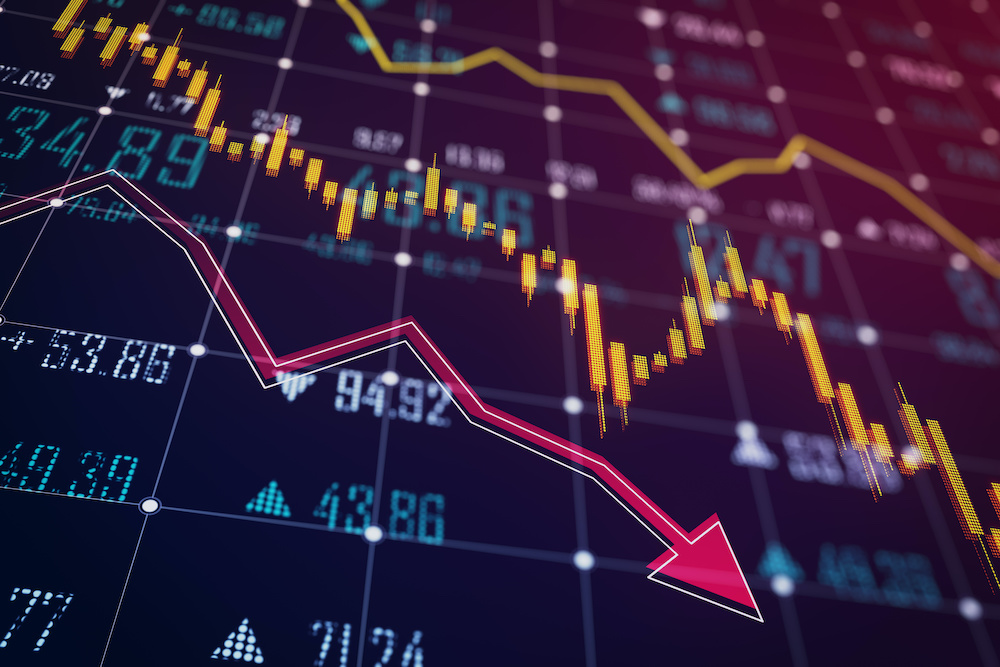Kockázati figyelmeztetés: A pénzügyi különbözeti ügyletek (CFD-k) összetett eszközök, és a tőkeáttétel miatt magas kockázattal járnak, ami gyors pénzügyi veszteségekhez vezethet. Ennél a szolgáltatónál a lakossági befektetői számlák 72.76%-án pénzügyi veszteség keletkezik CFD-kereskedés során. Fontolja meg, hogy megérti-e, hogyan működnek a CFD-k, és hogy megengedheti-e magának a magas pénzügyi veszteség kockázatát. Kérjük, olvassa el a Kockázati Tájékoztatót.


Global stock market slump: Why was Japan's Nikkei 225 index hit the hardest?
Nikkei 225 reaches 9-month low
On Monday, August 5, 2024, the Nikkei 225 index recorded its biggest one-day drop since the so-called "Black Monday" in 1987, as it lost more than 12% of its value. The massive sell-off in technology stocks on Wall Street had already caused a global decline in the broader market on Friday, with Japan's Nikkei among the hardest-hit indices. Its deeper losses on local bourses were the result of several weeks of yen appreciation against the U.S. dollar and other global currencies. A stronger yen meant lower earnings for exported goods, given the unfavourable exchange rate. The currency's value was also supported by the recent interest rate hike by the Bank of Japan from 0.10% to 0.25%, the highest since 2008.[1][2] *

Nikkei 225 index value evolution over the last 5 years (Source: Investing.com)*
Stocks around the world have been hit
There was a partial reversal in Tuesday's Asian trading as Japanese markets recovered somewhat and, thanks to renewed buying of declining stocks and a slight weakening of the yen, the Nikkei 225 rose nearly 10%. Tokyo's TOPIX index followed a similar trajectory. In Monday's trading hours, partial stabilisation was also evident on the US stock market and European shares, which had only recently recovered from the political earthquakes in France, once again made their way through their multi-month lows. *

The evolution of the TOPIX index over the last 5 years (Source: Investing.com)*
The bullish mood on the stock exchanges
The current fluctuations may be more the result of speculative trades and may have no real basis in economic events. However, according to analysts, it is too early to think that the threat of a bearish trend has passed. It is thought that markets could gradually revitalise during September and October, but uncertainty in the form of a recession remains. In addition, the BoJ could continue to raise interest rates, which could cause further problems in the markets.However, the Japanese government has pledged to cooperate with the BoJ, adding that it will closely monitor the country's economic growth and consider appropriate action if necessary.[1]The Japanese government has also pledged to cooperate with the BoJ, adding that it will closely monitor the country's economic growth and consider appropriate action if necessary.[2][3] [1]
Are investors panicking?
As mentioned above, the whole situation has its origins in the outright panic selling of shares in technology companies, whose half-yearly economic results suggest insufficient revenue growth from AI-based technology investments. However, the latest concerns come from economic indicators in the US, which suggest the possible arrival of a recession. Unemployment rose again in July from 4.1% to 4.3%, whereas the consensus estimate was unchanged. This data feeds the criticism towards the US Fed about easing interest rates too late. Bets are now multiplying for a September cut of up to 0.5%, instead of the planned 0.25%. However, central bank officials are trying to calm the situation by saying that such a rise in unemployment does not mean the economy is crashing into recession, and they are underlining their claim with Monday's data on promising growth in the service sector. At the same time, they say it is important to monitor developments in the markets over a longer period of time.[4]
Conclusion
The fall of Japan's Nikkei 225 index in the context of the global stock market decline reveals the complexity of economic relationships and the importance of regional factors. The strengthening yen and the Bank of Japan's decisions played a key role in deepening losses in the Japanese market. At the same time, the uncertainty surrounding the US economy and technology companies has led to massive sell-offs, which have spilled over into other parts of the world. Although the short-term recovery has brought partial relief, the overall situation remains unclear. Markets are anticipating further actions by central banks and the possible onset of a recession, which may have a further impact on their volatility in the coming months. [2]
Adam Austera, Principal Analyst at Ozios
* Past performance is no guarantee of future results
[1], [2] Forward-looking statements are based on assumptions and current expectations, which may be inaccurate, or on the current economic environment, which may change. Such statements are not guarantees of future performance. They involve risks and other uncertainties that are difficult to predict. Results may differ materially from those expressed or implied by any forward-looking statements.
[1] https://www.investing.com/news/stock-market-news/citi-recommends-defensive-stance-on-japan-amid-boj-uncertainty-recession-fears-3555870
[2] https://www.investing.com/news/economy-news/japan-will-continue-to-monitor-analyse-financial-market-moves-finance-minister-says-3555895
[3] https://www.investing.com/news/commodities-news/morning-bid-rollercoaster-markets-nikkei-rebounds-10-3556248
[4] https://www.investing.com/news/economy-news/us-doesnt-look-like-its-in-recession-feds-goolsbee-tells-cnbc-3554870
[1] https://tradingeconomics.com/japan/interest-rate
[2] https://www.investing.com/news/stock-market-news/asian-stocks-rebound-from-steep-losses-nikkei-surges-over-10-3555908